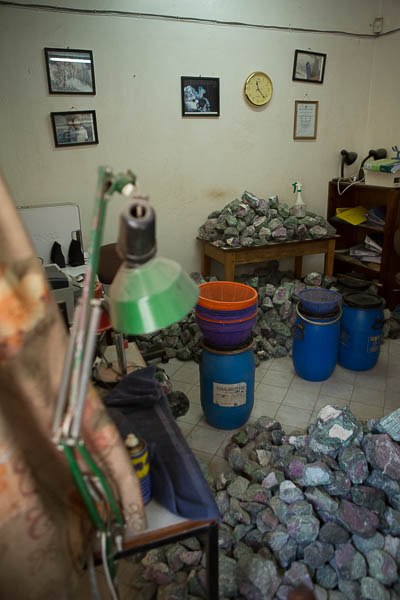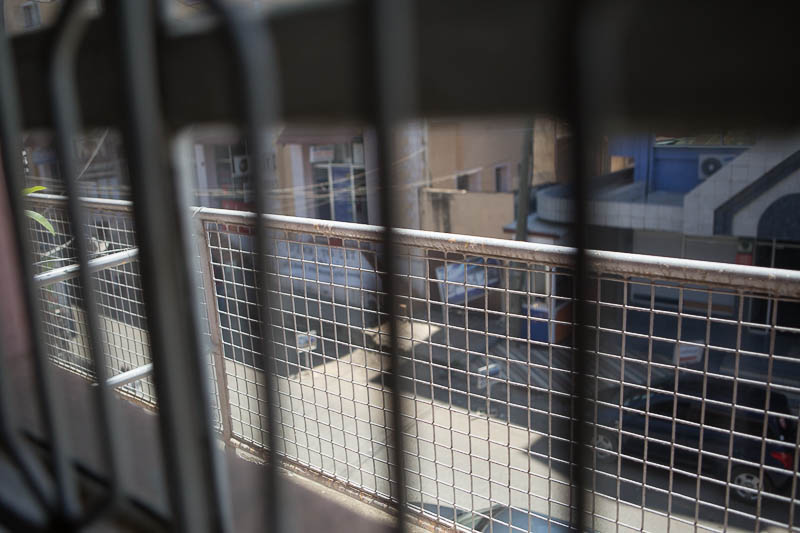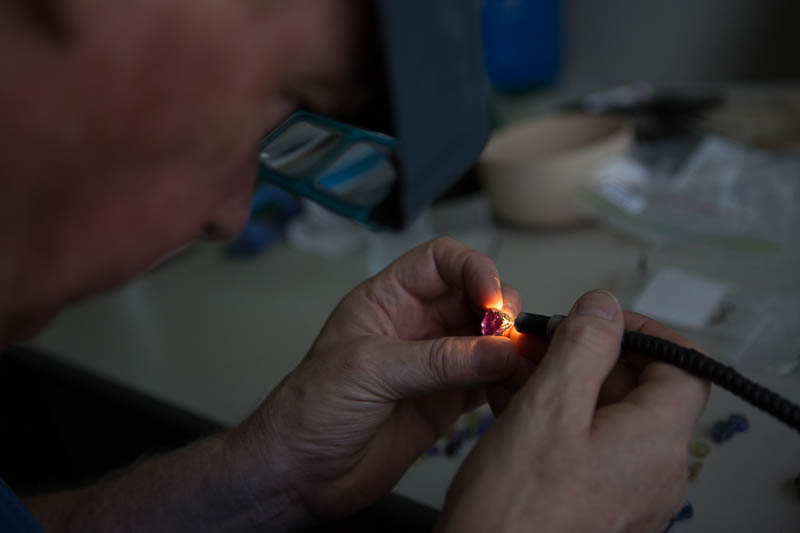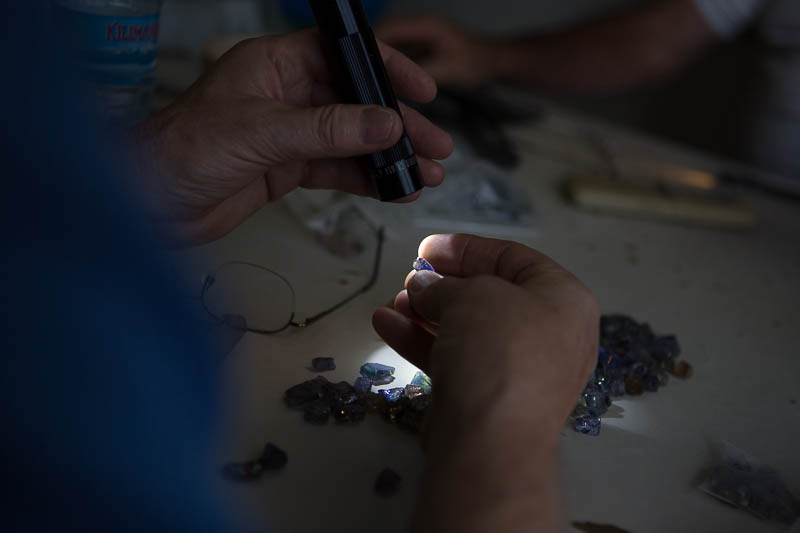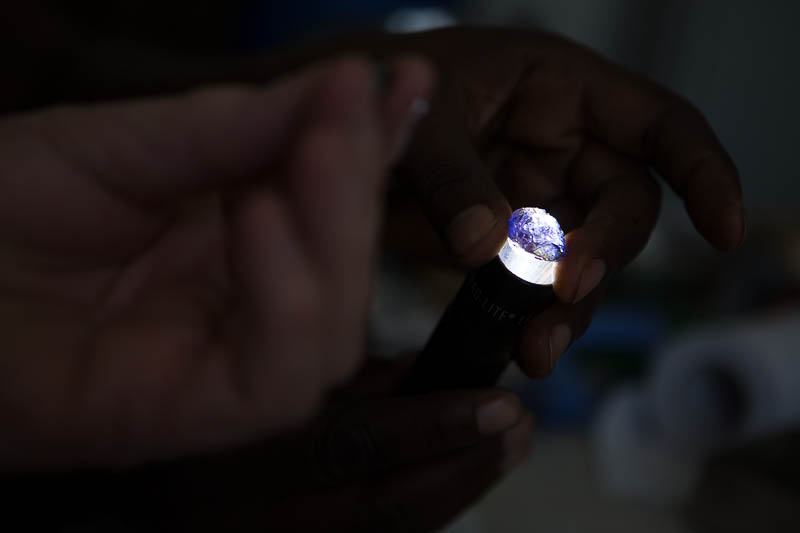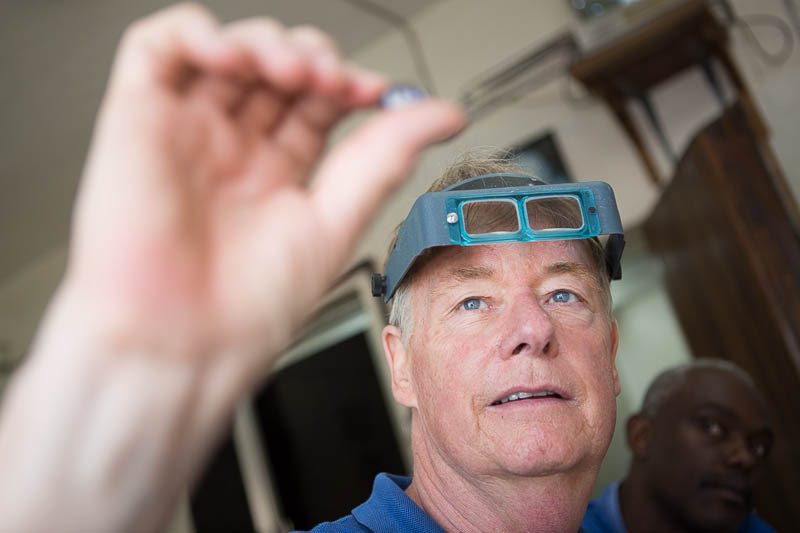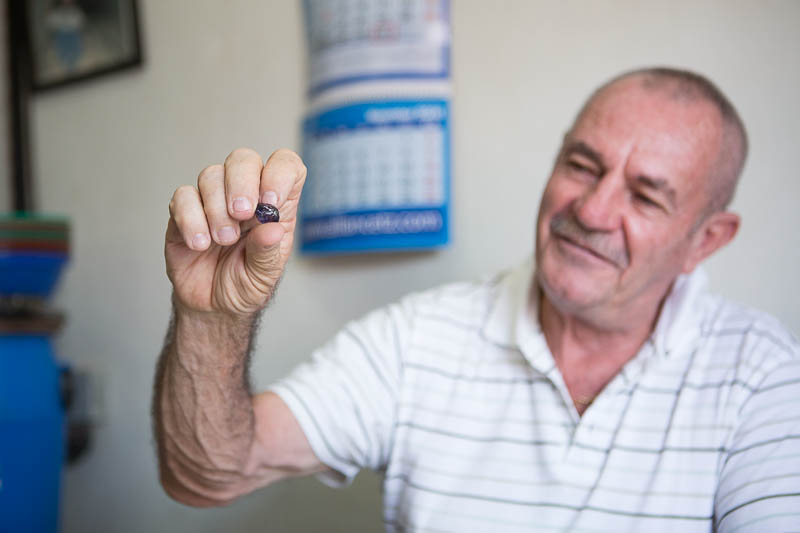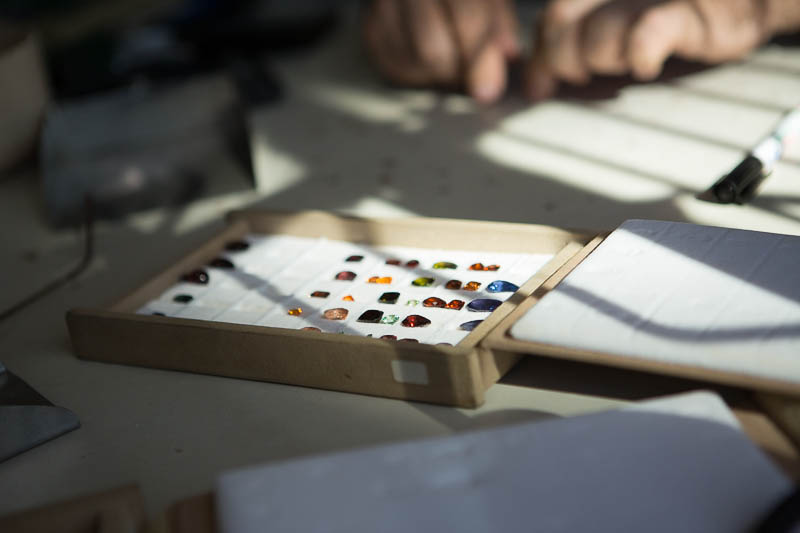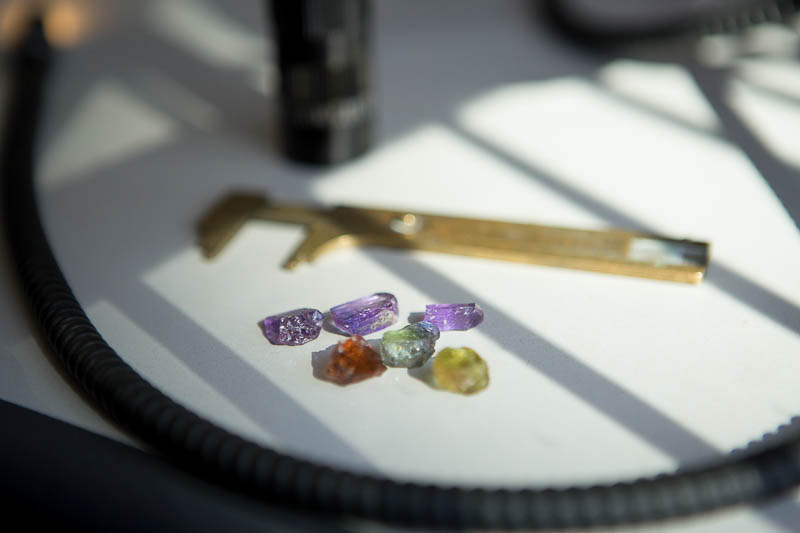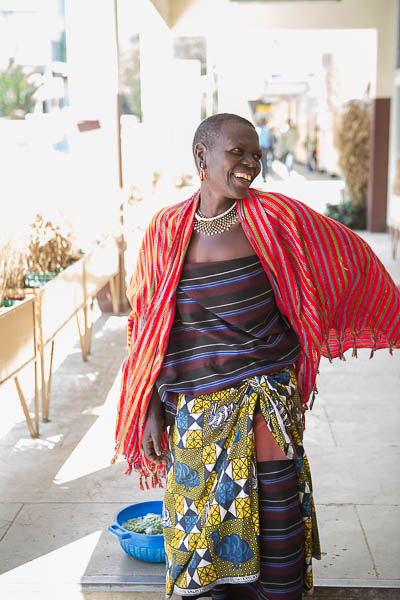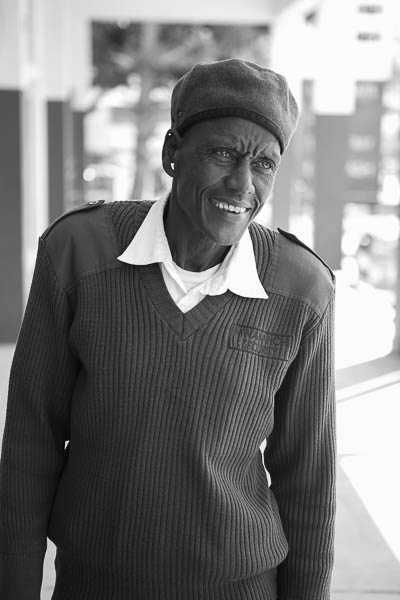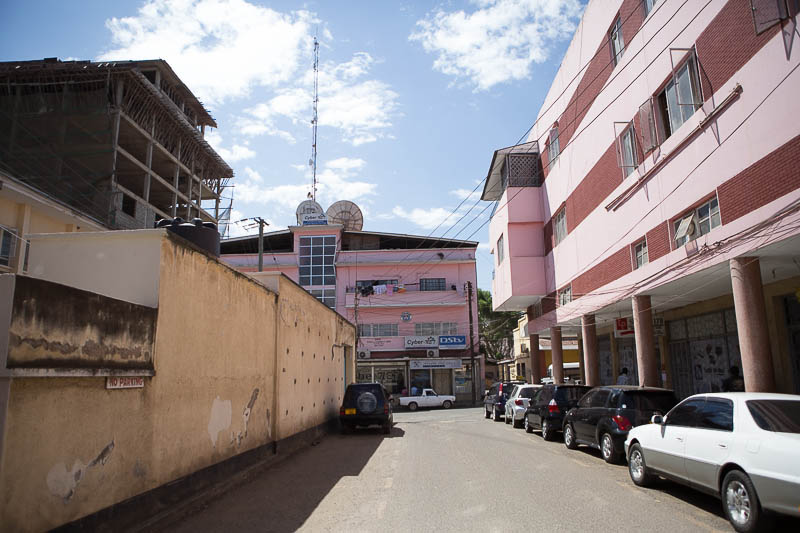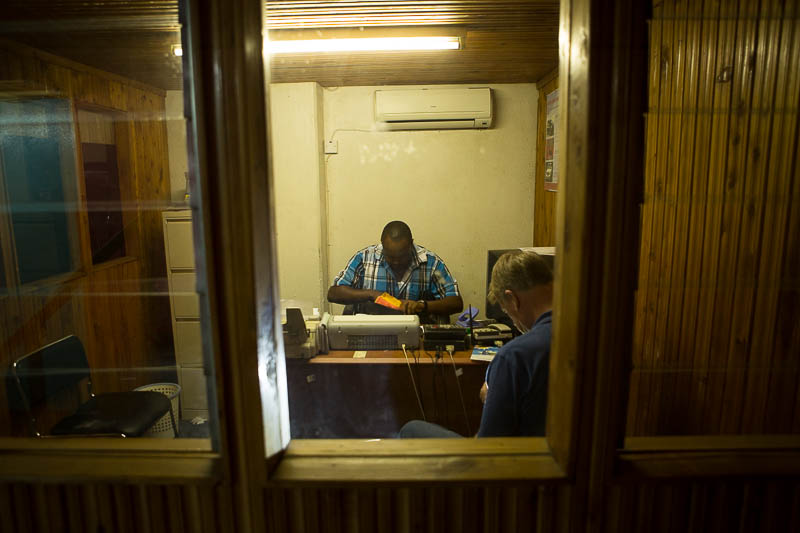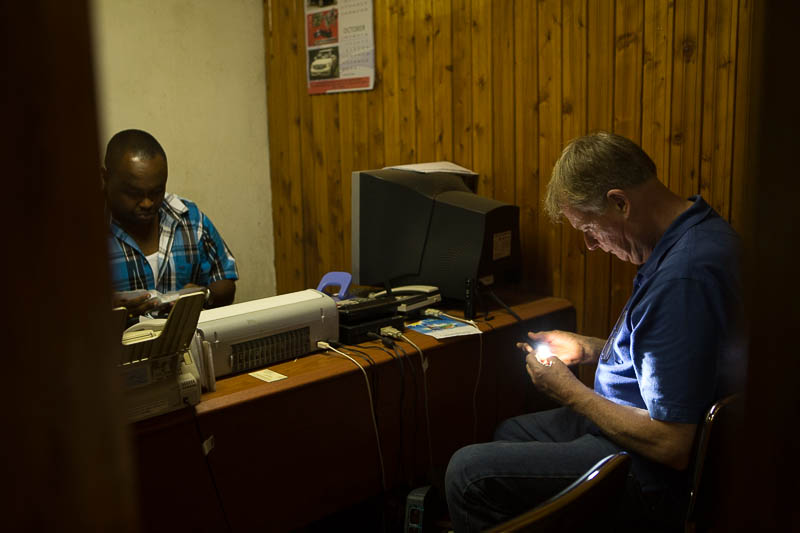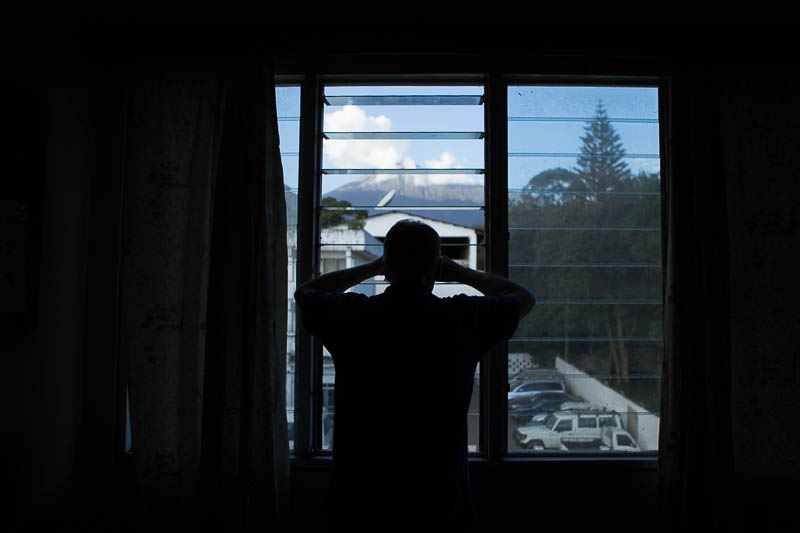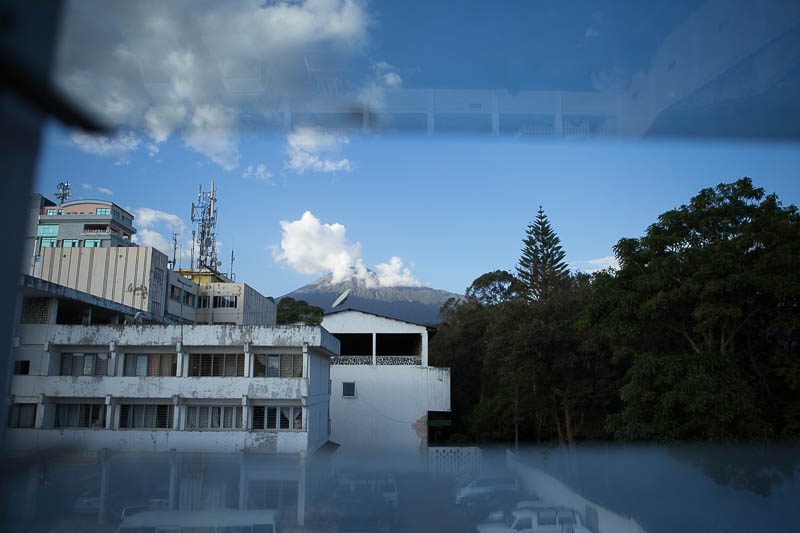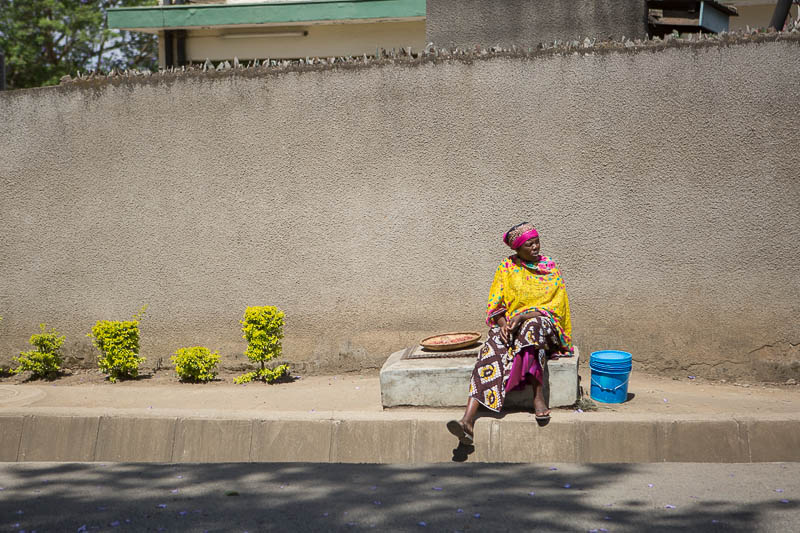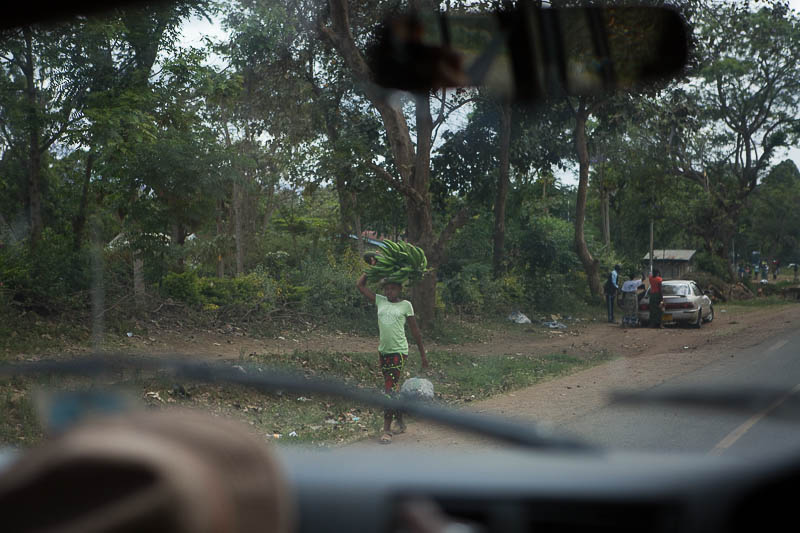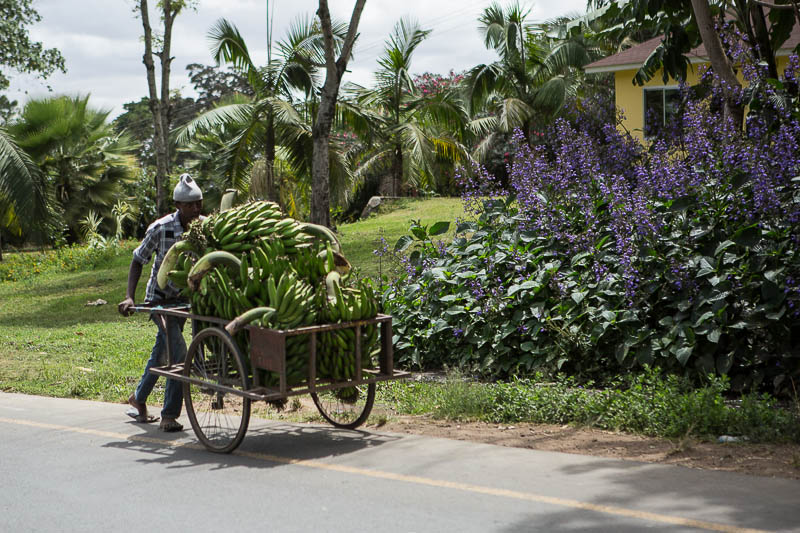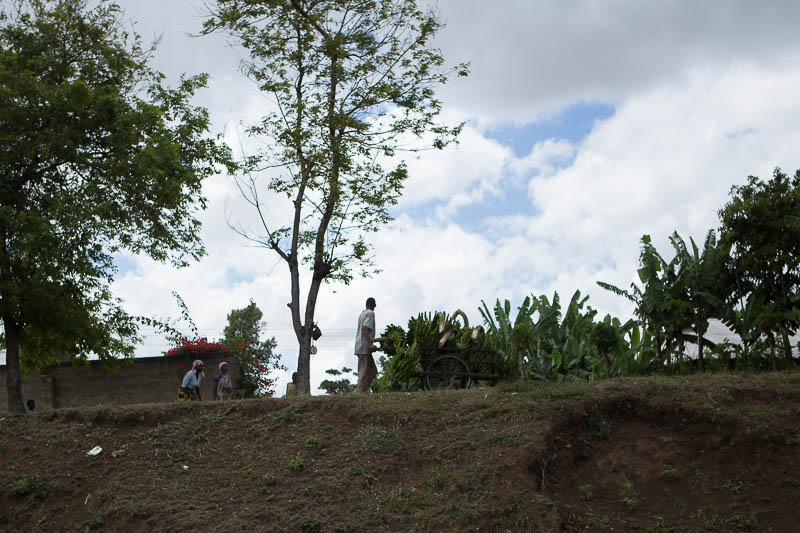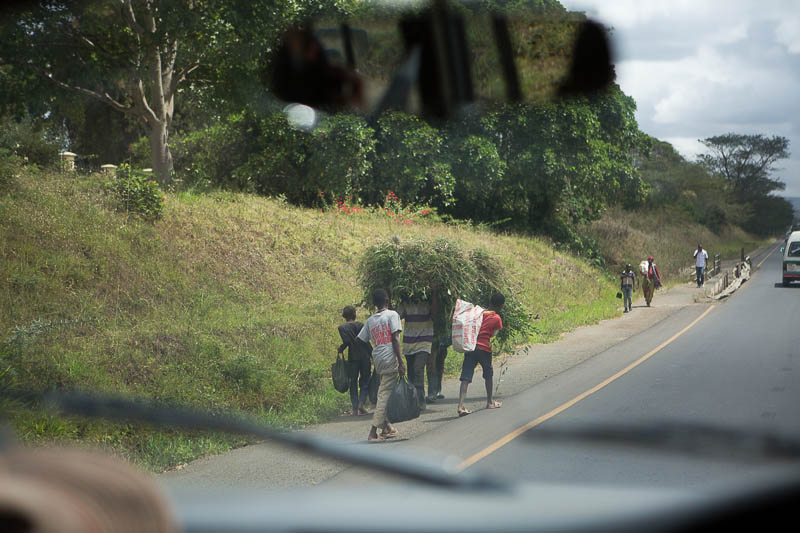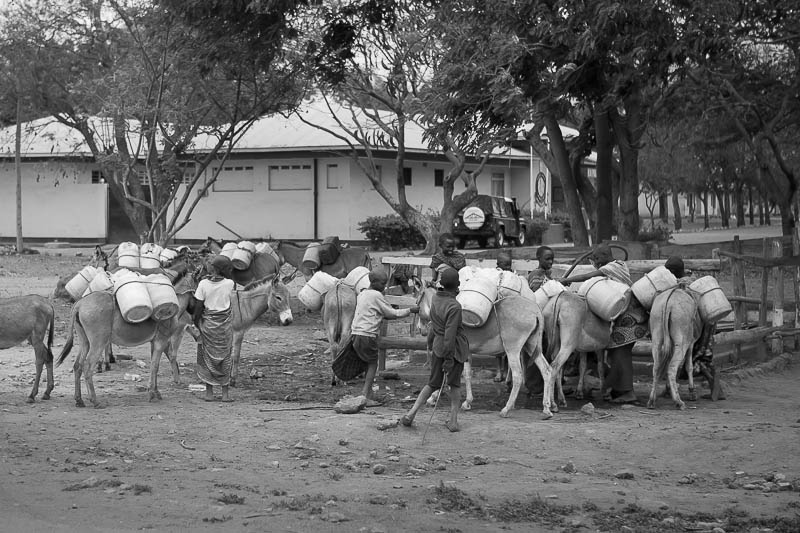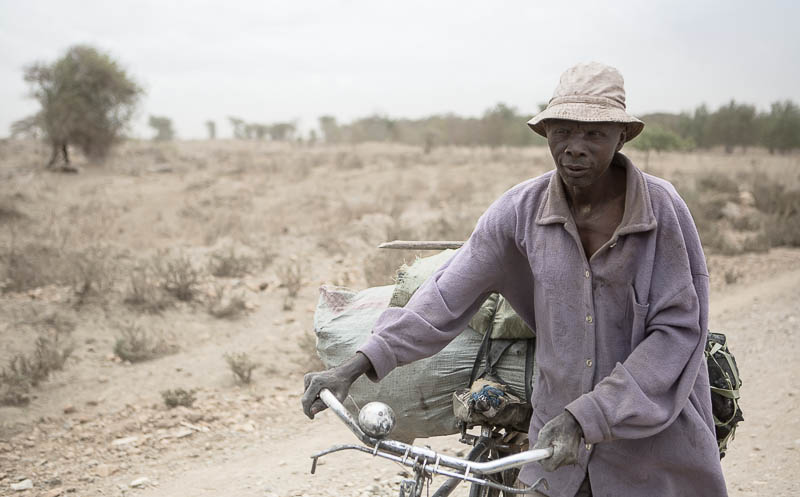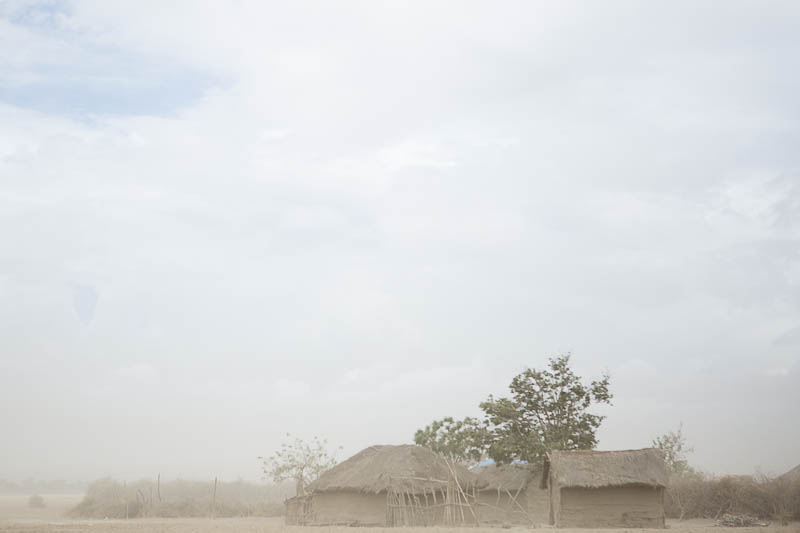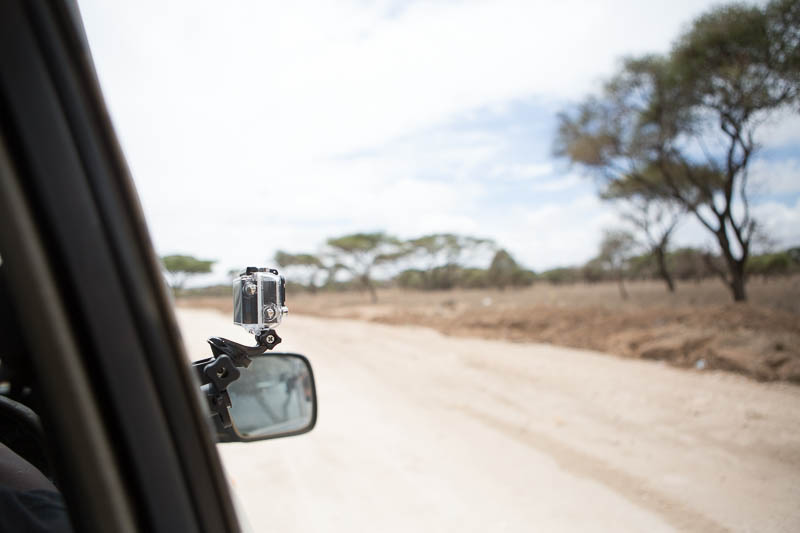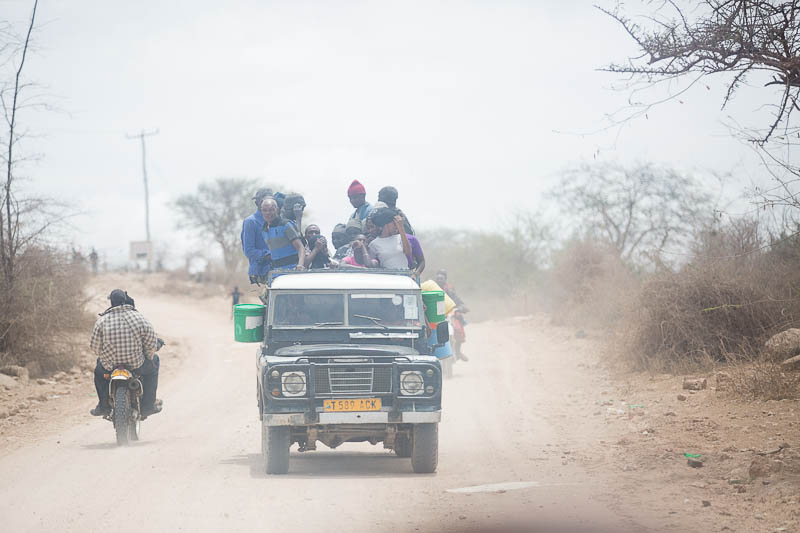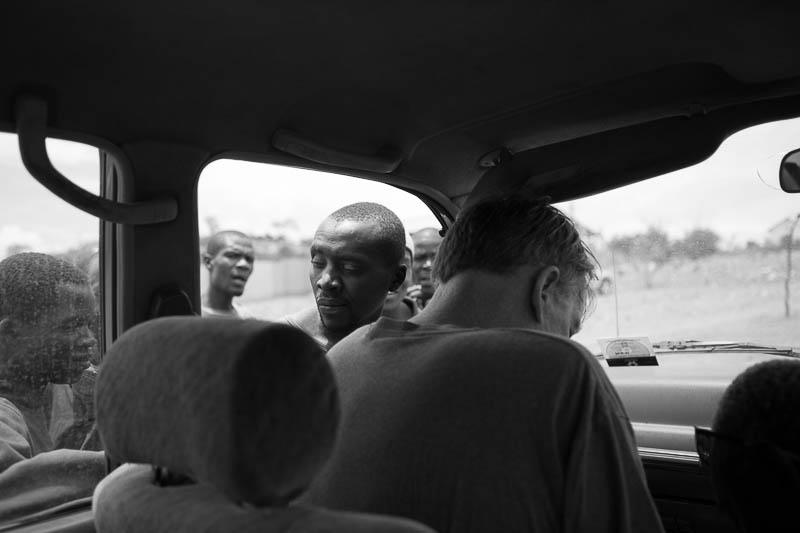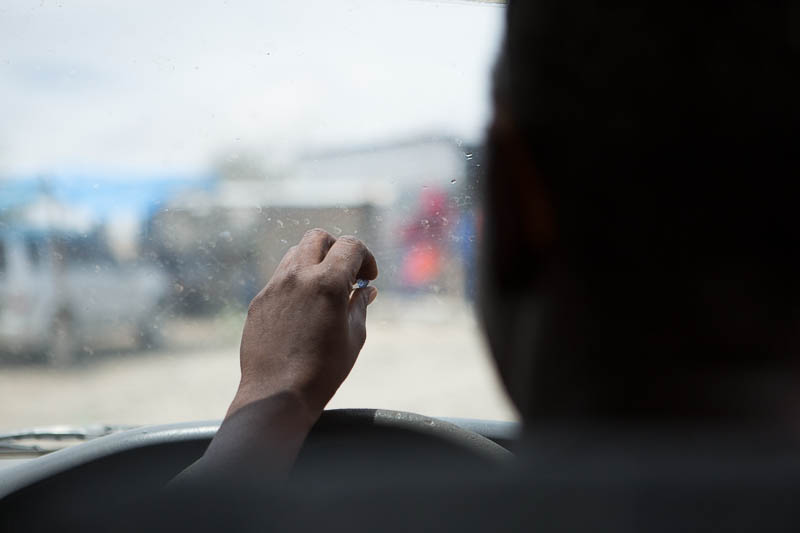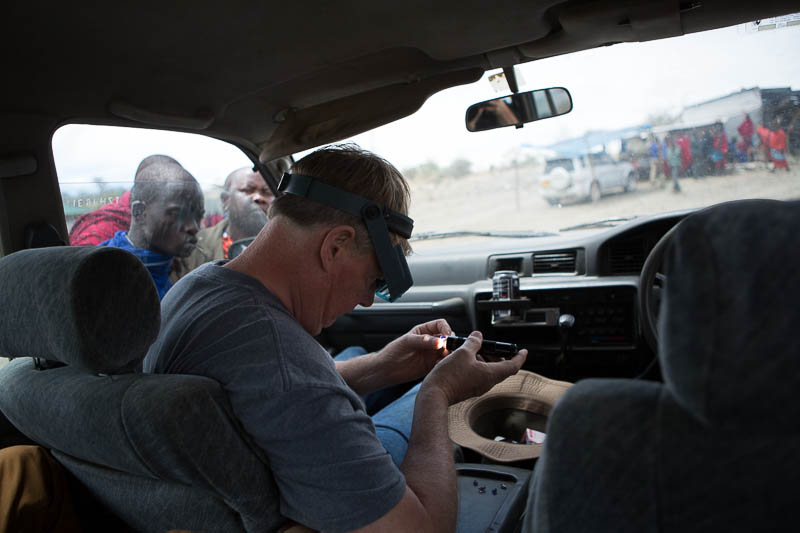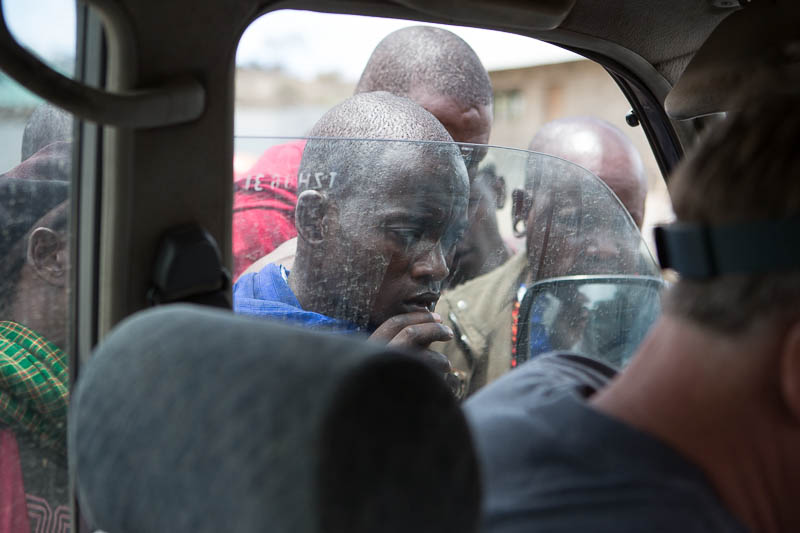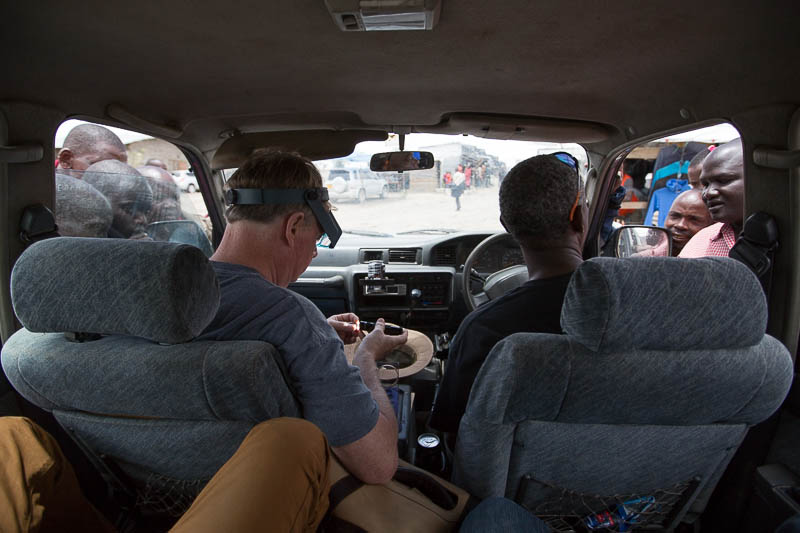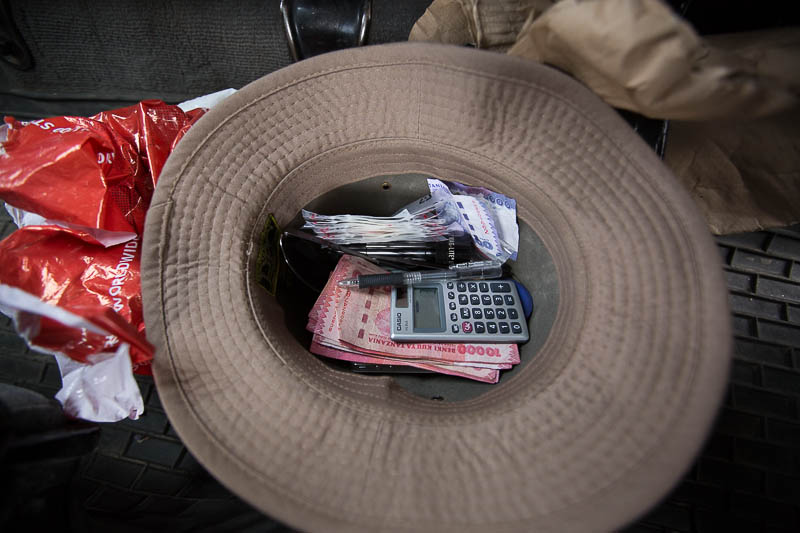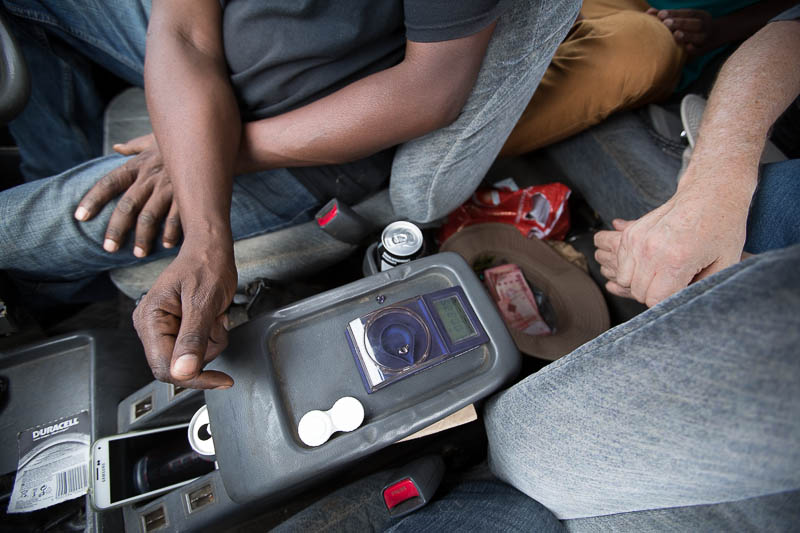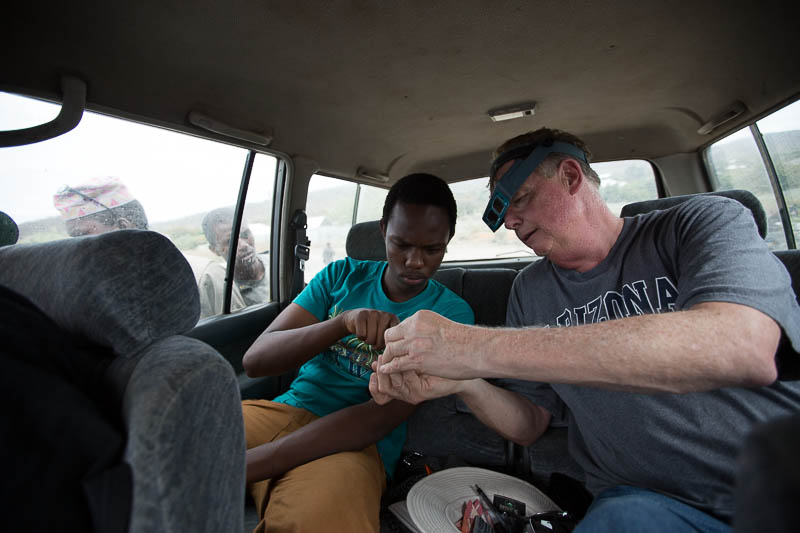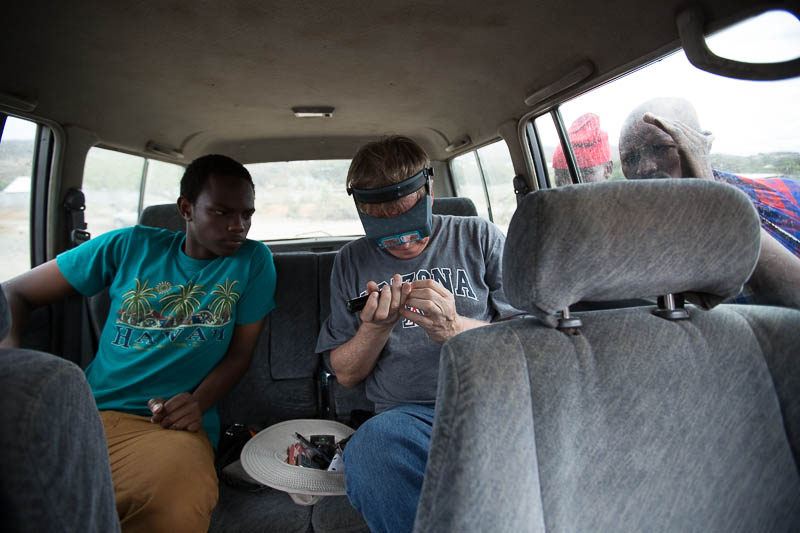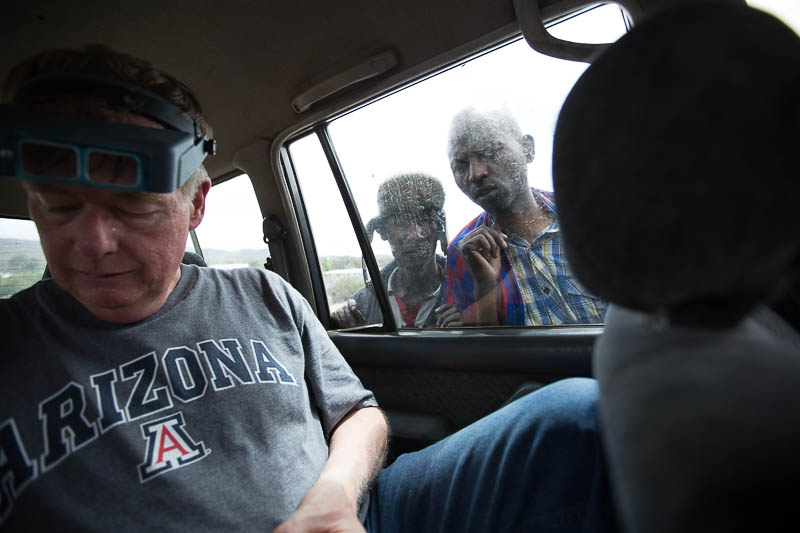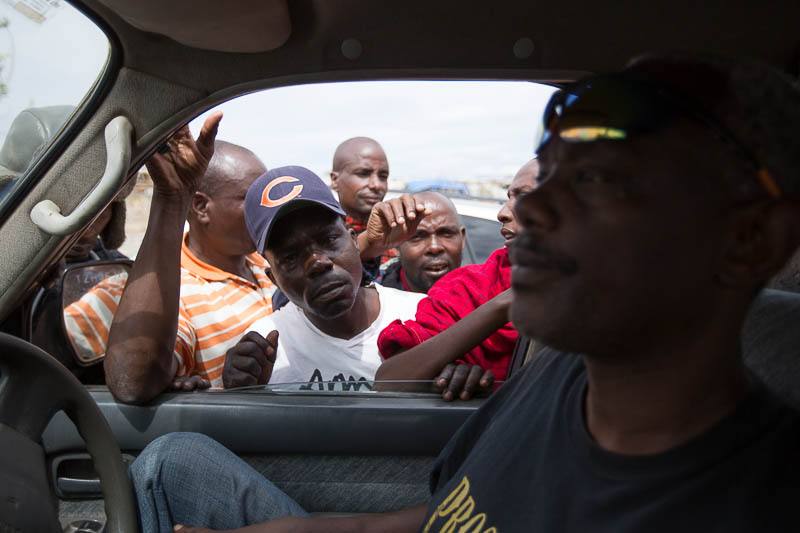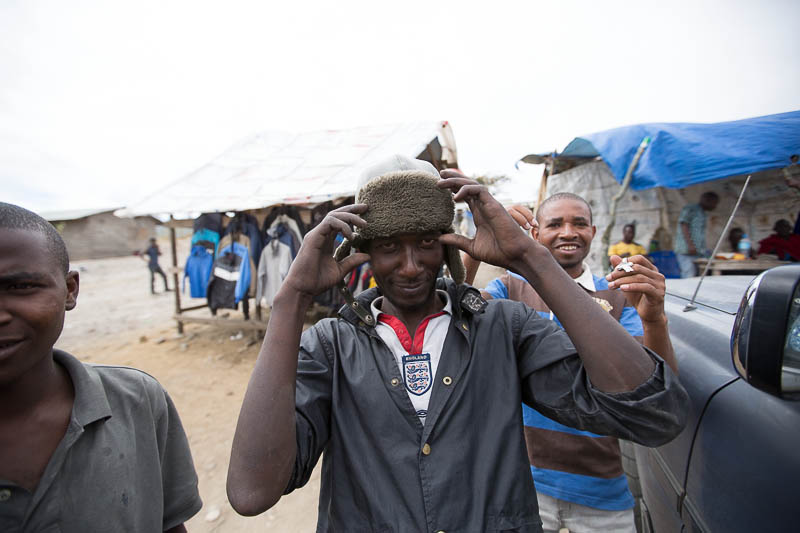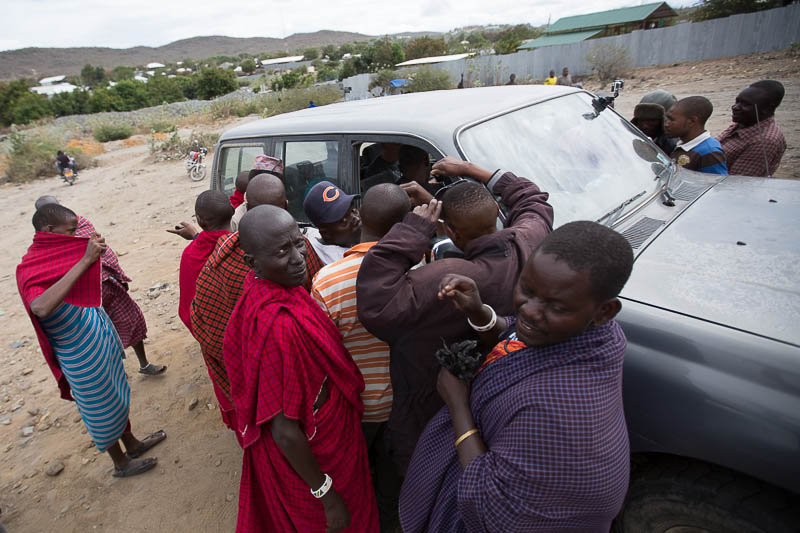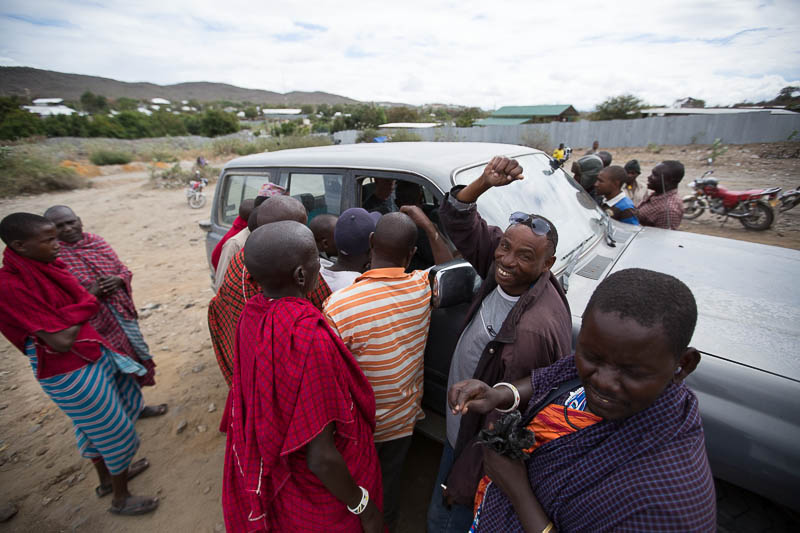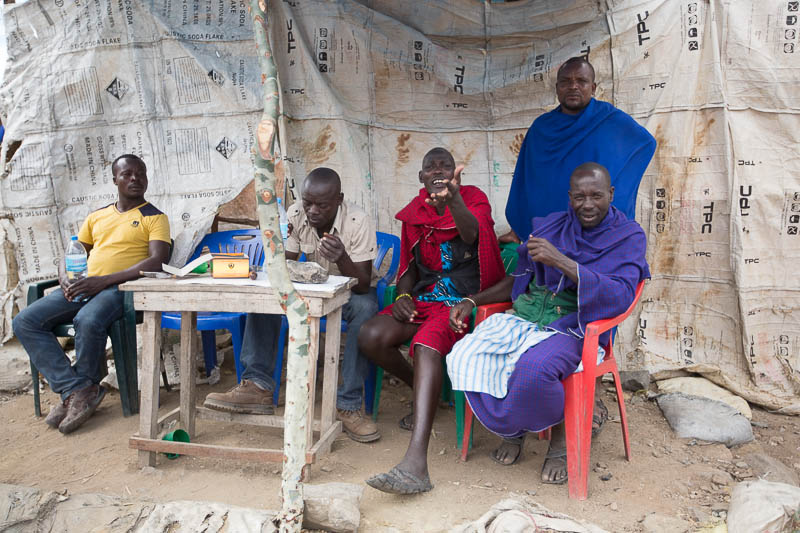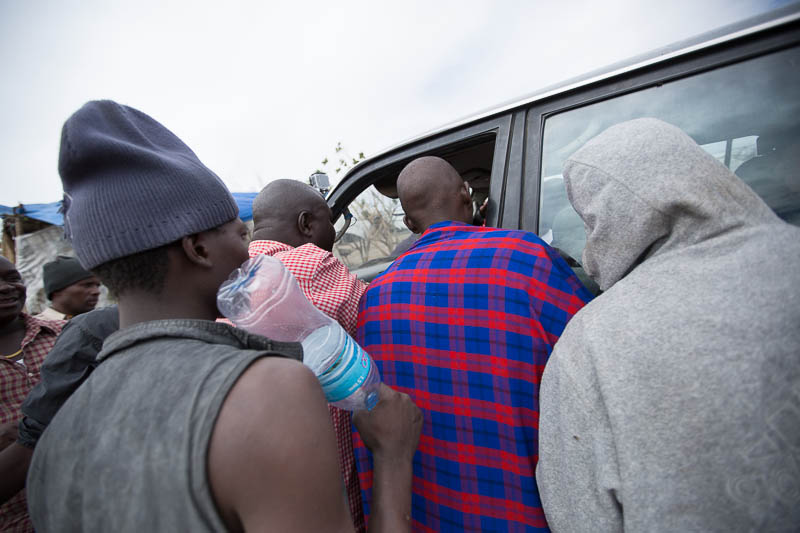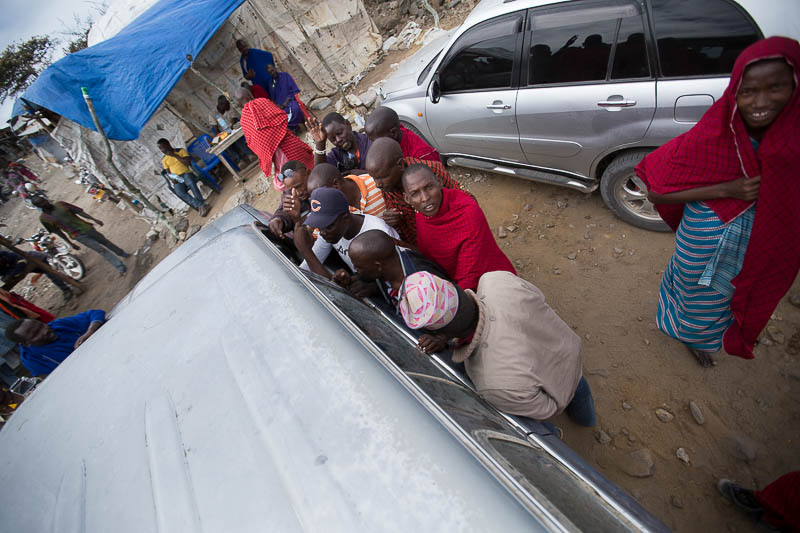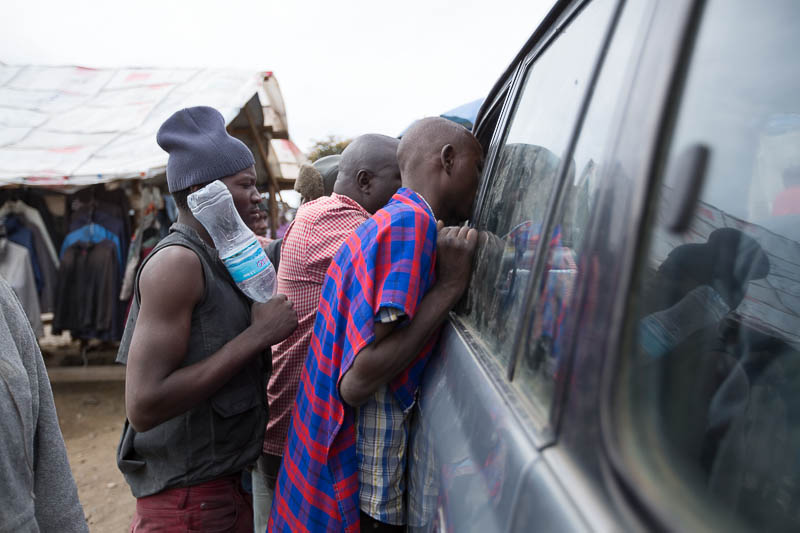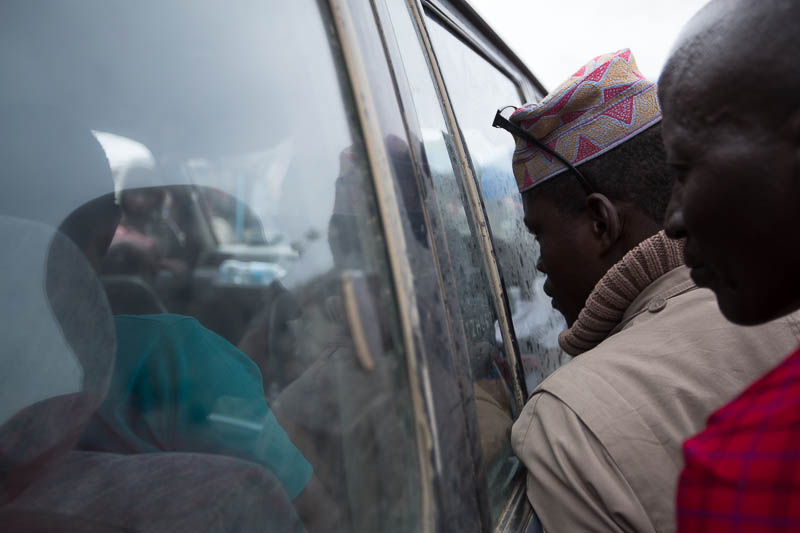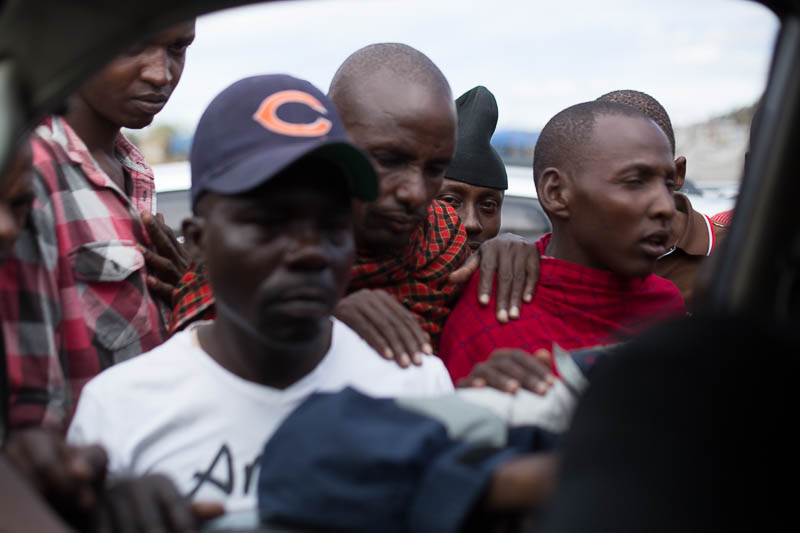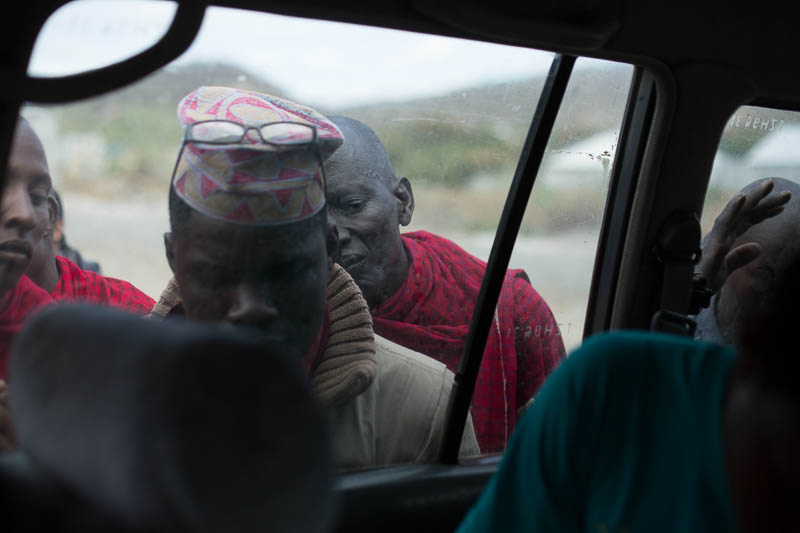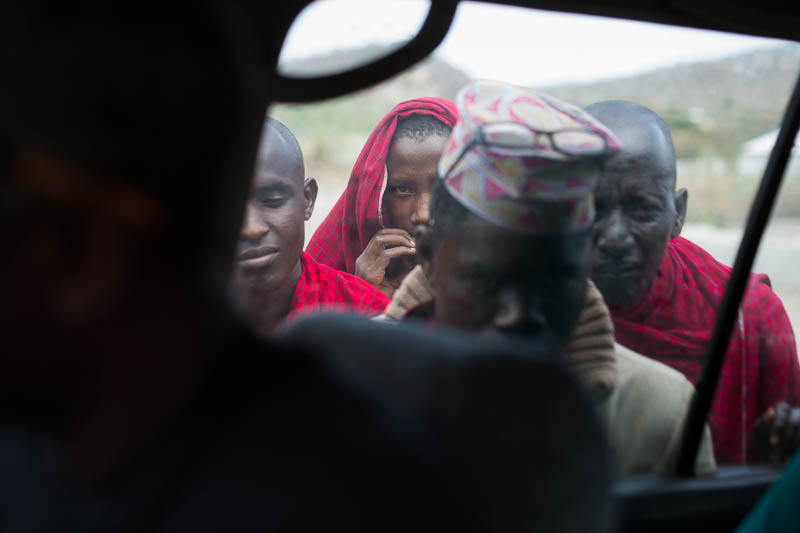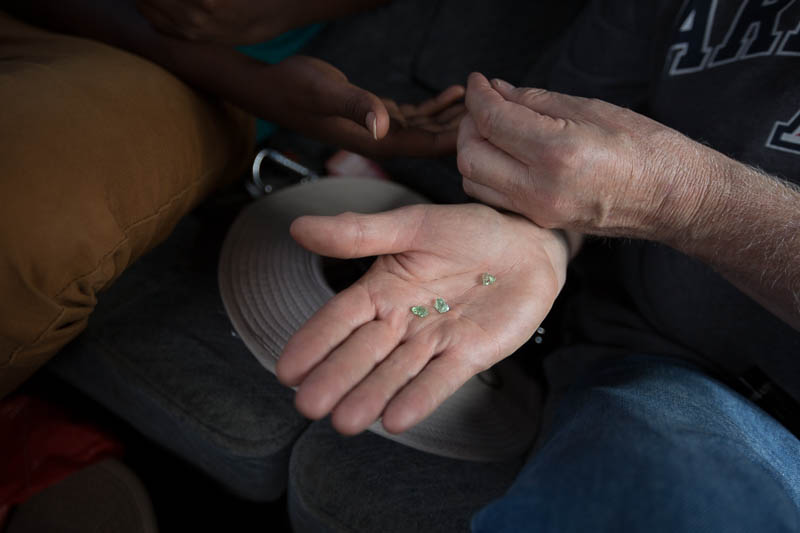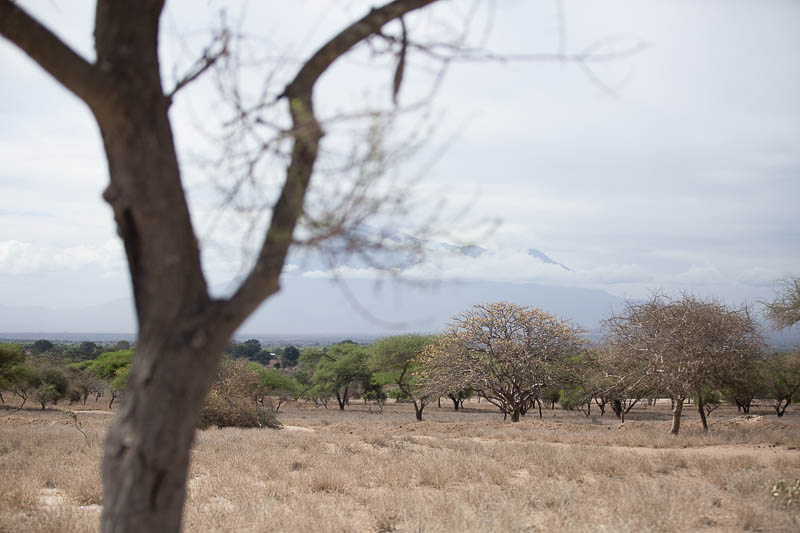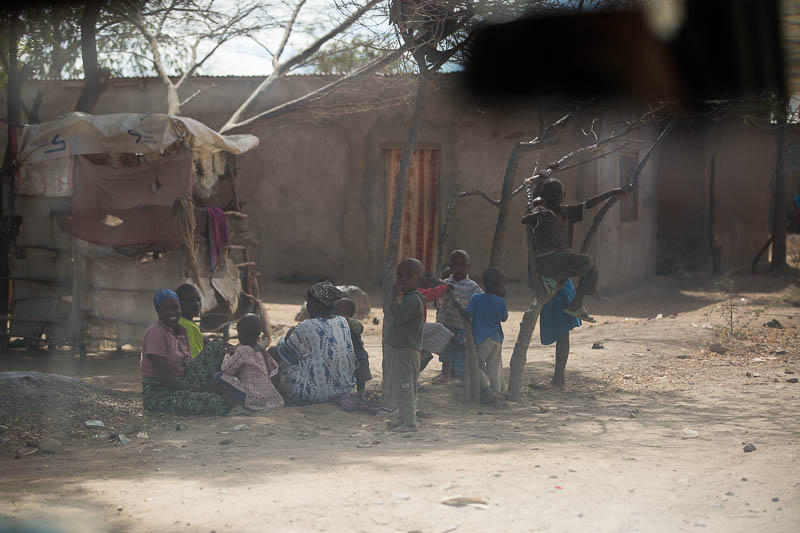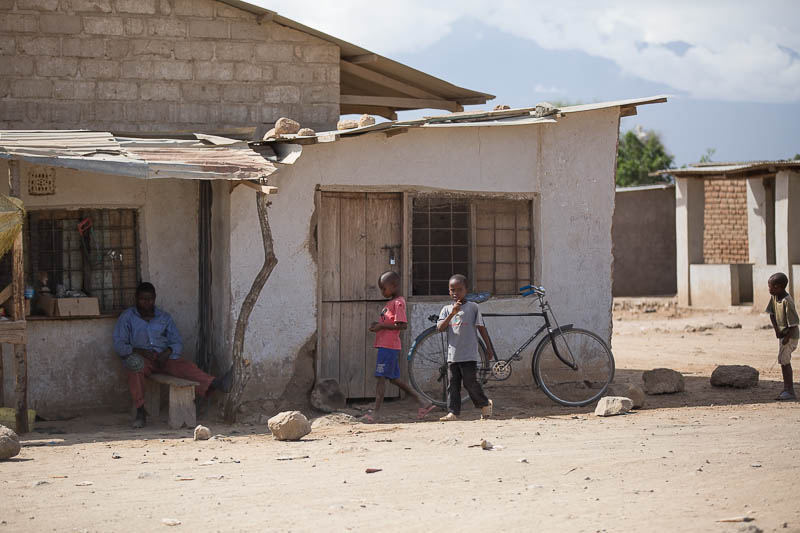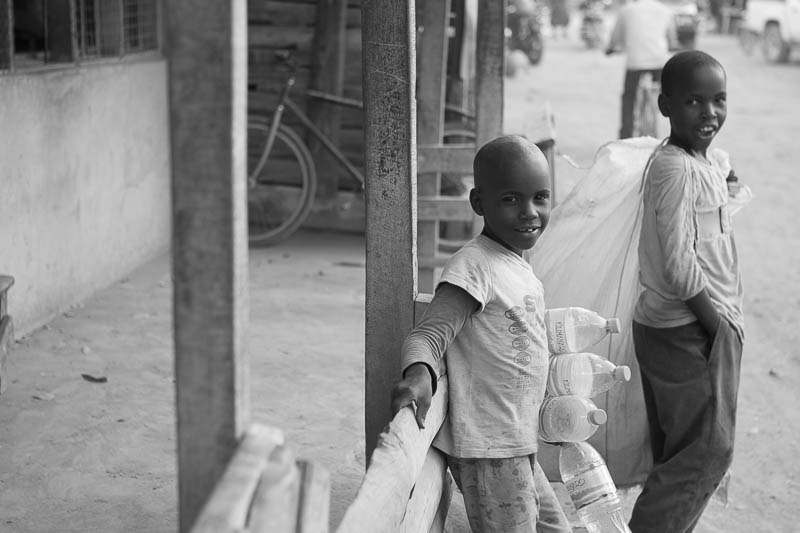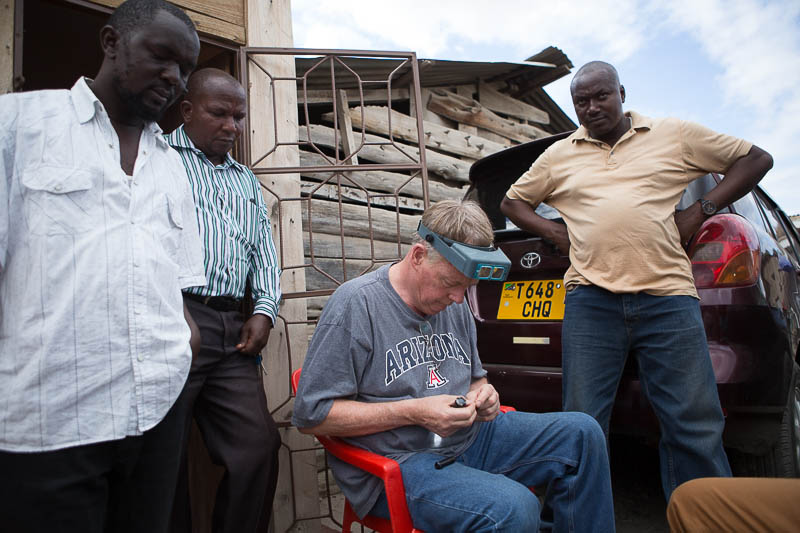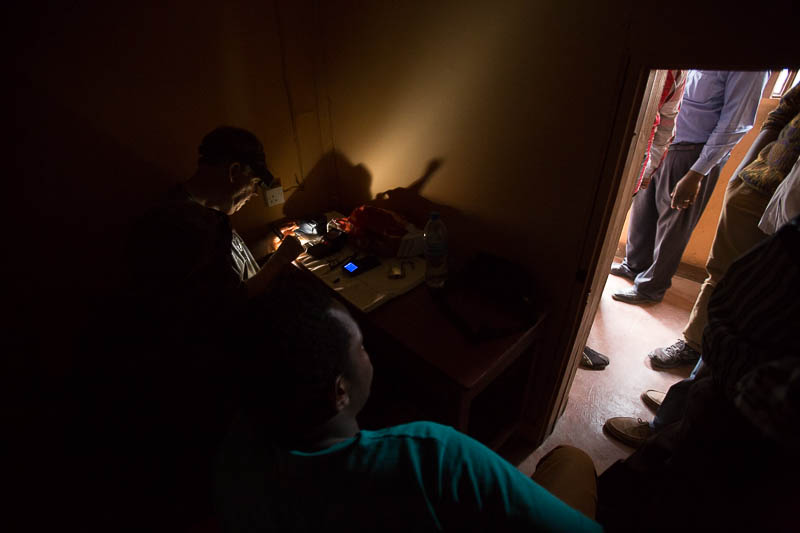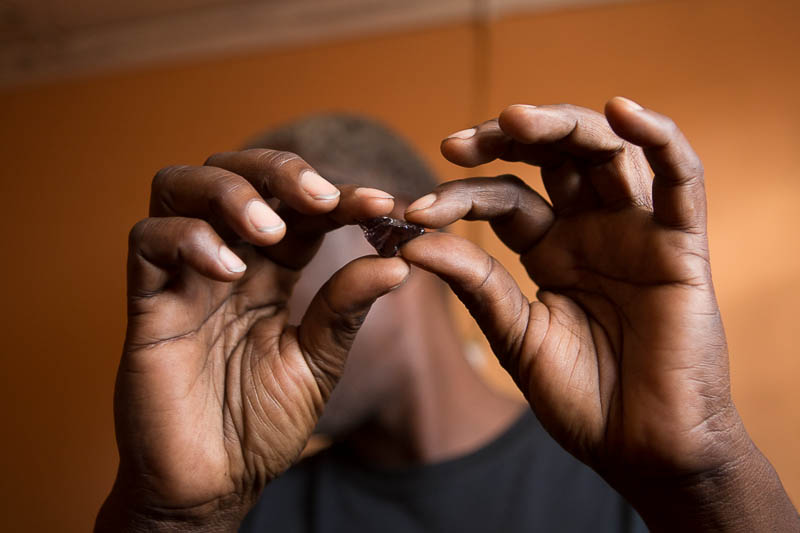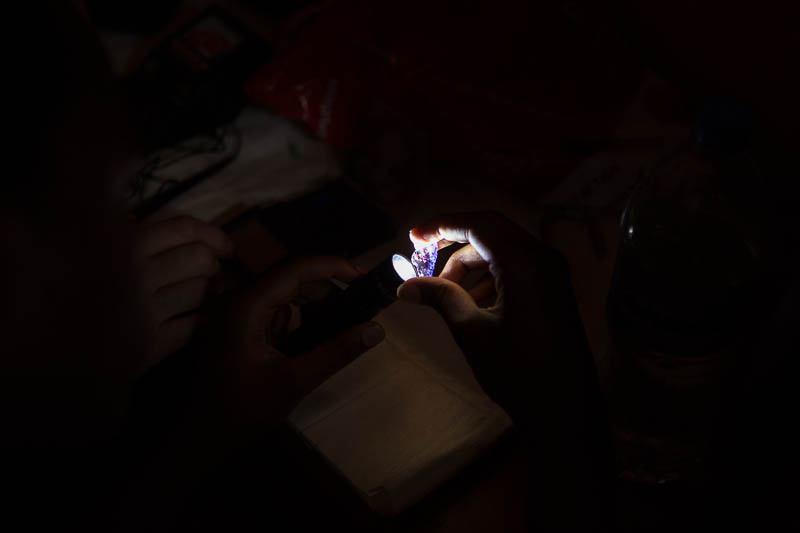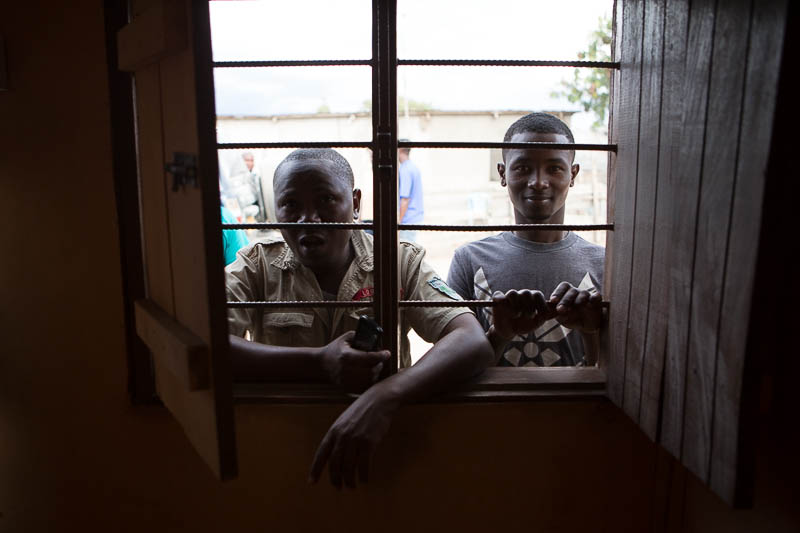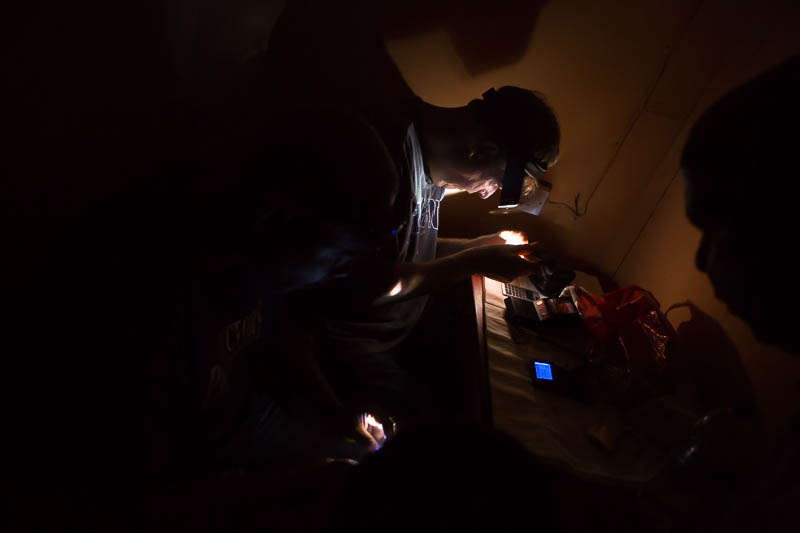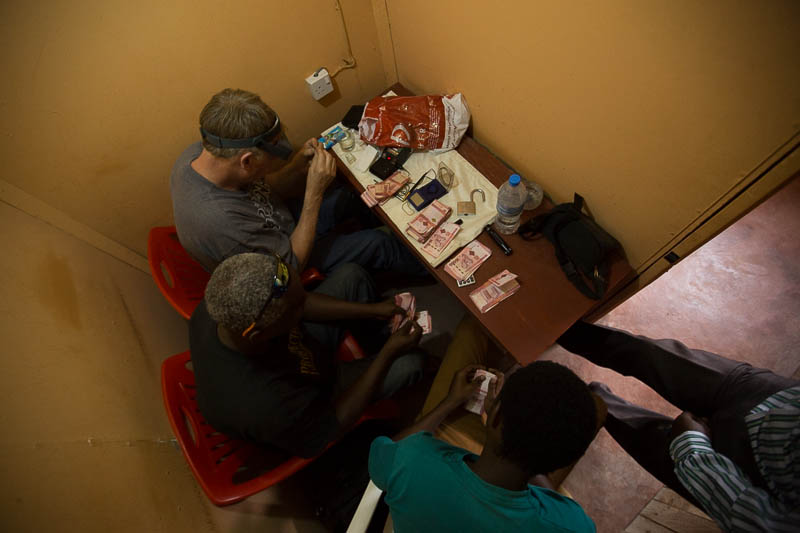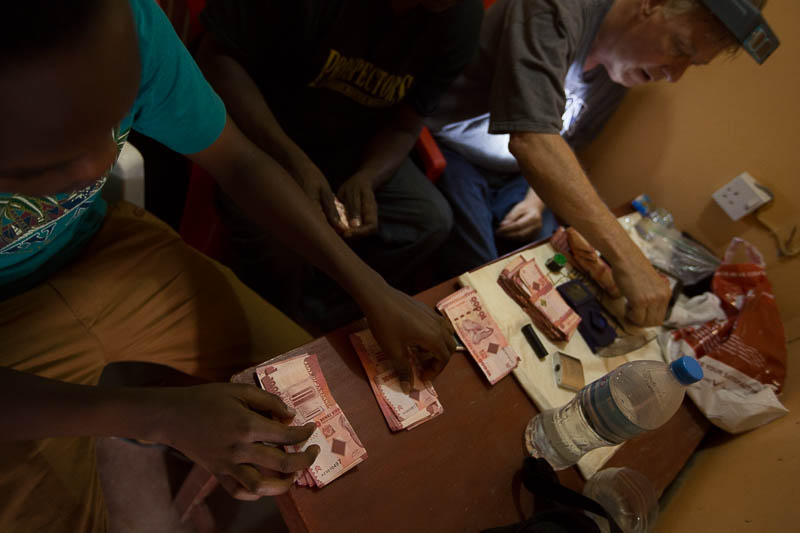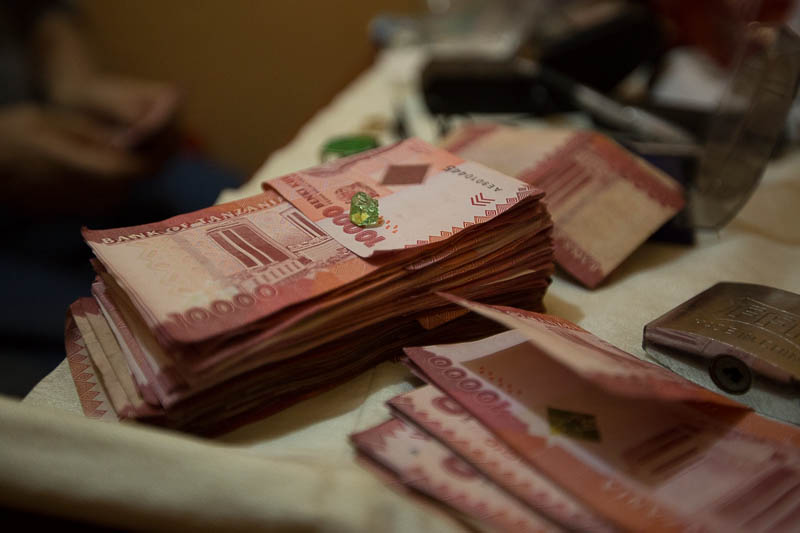By Day 4, we had thought that we would be heading out of town the next few days. The plan was to head out to a few mining towns and see what we could get our hands on with stones, as well as hope to find something interesting to photograph. The more we spoke to the locals, the more we figured this might not be the best idea. All we kept hearing was that stones were pretty scarce these days and that there wasn’t really much to come by, especially outside of Arusha. If stones were going to be scarce, we figured it might not make sense to drive out 4 hours away and risk wasting valuable time. Instead, we decided to try a few more options locally.
Considering there were a few more local dealers that we still had yet to meet with, we figured this would be our best bet for now. We went over to a local dealer to see what he could offer. Walking up to his office, there was a security guard that greets you at the door. He lead us up a narrow stairwell and through another gated door. The security guard signals to the surveillance camera overhead and a buzz sound unlocks the latch. Once through this door, we passed down another narrow hallway. At the end of the hallway was a woman at a small desk that sat behind a large glass window. This woman’s small desk was piled high with a mound of small stones and was lit by a red lamp. We looped around the corner and into his gated office door.
The first thing you see when you walk into the office was loaded with large chunks of stone. Steve mentioned that these were chunks of ruby in zoisite. Zoisite is actually the parent to tanzanite and is basically the same mineral. The only big difference is that zoisite is green, while tanzanite is blue.
There were so many of these, I’m surprised the floor hadn’t collapsed.
Inside his vault were giant bags of all sorts of various stones and gems.
The view from the office window…
As intimidating as this placed seemed to be, turns out the dealer was a super nice guy. I suppose all of the security is just a necessary precaution to take when you’re dealing with such high quantities of materials like these.
Steve jumped right in, checking out the first pieces of tanzanite that were up for offer.
After checking out a few of his nicer pieces, he decided to show us something just for fun. This next piece he showed us was what those in the business call YAG. YAG stands for Yttrium aluminum garnet, which is actually a synthetic material. In other words, the stone is a fake. Turns out some people are getting extremely good at engineering stones these days, and this is one of the best fakes that Steve thinks he has ever seen. The stone is nearly identical to a real stone, even down to the structure of the crystals inside. Considering how similar they are, it can be extremely difficult to determine its authenticity. The dealer of course told us that it was a fake, but wanted to share this stone with them for fun. Apparently he had picked it up by mistake on a deal and was stuck with it before he could determine that it was a fake. Pretty incredible.
The dealer had some very nice pieces to show, but nothing too incredibly unusual. Being that Steve likes to dedicate most of his attention to the highest of quality and most rare stones he can find, most of what was offered was not of much interest.
None the less, by the end of the short visit, Steve was able to score a few gorgeous pieces of colored tanzanite — another very rare form of tanzanite that he was thrilled to get his hands on for the shop!
One the way back to Sune’s office, we were fortunate to run into a few wonderful personalities. 🙂
This woman was selling a few different food items on the street.
One of the security guards to Sune’s office building taking point. 😉
There was one more dealer to meet up with, again, just down the street.
This was one of the funkiest offices yet, especially for selling stones. It was small, dark and had zero space to lay out any goods.
With only a few types of stones to offer and prices that were through the roof, Steve ultimately passed and we were out of there within 15 minutes. You win some, you lose some!
Back to Sune’s office to establish a game plan! Bonus view of Mt. Meru from his office…still can’t get over it.
Steve taking a snap on his phone.
Since there really wasn’t much to report from Day 5, I decided to include both 5 and 6 in the same blog. On day 6, we decided to head back into the mines, but with a different plan of attack.
Before we get there, I’ll share a few of the sights that we found along the way.
As we sit waiting for someone to arrive in the car, we observed this lady on the street selling shelled peanuts. Many people walk around carrying peanuts in little trays and serving them out to customers with a spoon. I think she was eating more than she was selling…
Bananas are a huge crop here in Tanzania. Its also common practice to carry your loads of goods on your head, which is adopted from the Masaai tribes of the area.
I don’t think this guy was about to try carry his on his head…
A group of kids filling up water jugs that are carried by mules. Again, very common sight to see mules like this, carrying jugs of materials.
On we reached the mining area, we noticed this awesome dude walking his bike down the road. He was carrying some sort of material that miner use at their camps for cooking, which I can’t seem to recall the name. I couldn’t pass up a photo with him, so we actually swung the car around and came back to snag a quick one.
More mules, likely hauling water to the mining camps.
One of the village huts along the way.
GoPro getting some footage along the way!
Miners making use of every inch of space and hoping a ride back to towns away from the mines.
We finally reached the mines. Instead of diving into the mines like on Day 2, today we thought we would try our hand at purchasing from the local miners inside the mining area. This is actually a pretty good bet, as many of the miners are actually paid their wages in stones. In order to make any actual cash, they often have to resort to selling the stones to dealers…or in this case, buyers like us.
The plan was pretty simple. All you really need to do is to pull up the car to the base of the camps and let the people come to us. When there’s a buyer in the area, the words gets around quickly. In no time flat, the car was surrounded by miners, eager to sell.
Awaiting a decision…
Steve’s goodie hat.
Steve teaching Bjorn, Sune’s son, a few things about picking out a good stone.
Everyone wants to know what’s going on in here…
This process at first can be a bit overwhelming. There really wasn’t much order to anything at all. The majority of the time, there were two or three hands in the windows at a time, all anxious to get the stones in front of the buyer (Steve).
This guy was proud of his hat…I think
.
Base camp office.
A few goodies!
Gotta have a selfie with the boys!
After rounding up a few great stones, we took off and drove towards a mining town about 20 miles from the mines. Driving just about anywhere in this area is truly breathtaking.
Yes another beautiful view of Mt. Meru.
A few kids hanging around in a town in route to our destination.
Since this particular town is known for being a bit sketchy, we decided that we would speak with the dealers here instead of trying to purchase off the street. This is typically a bit more welcomed, as you aren’t stepping on anyone’s toes. When working with a dealer in this particular case, the dealer doesn’t actually own all of the stones. Instead, it is the dealers job to provide a safe, comfortable working environment, while people from the street bring their stones to be sold. In an attempt to control the process and keep the buyer from being rushed (like the situation at the mines), the dealer will act as a middle man between the seller and the buyer, offering one or two pieces at a time for you to view. In exchange for the dealer’s services, each seller pays the dealer a commission from their profits, which typically ranges from 1-5%. Because of this commission that the seller has to pay to the dealer, prices when buying through a dealer will always be higher than buying off the street. In fact, from what we found on this particular day, the prices through the dealer were almost three times what they were at the mines.
We started off outside behind their office, but soon moved inside due to the heavy traffic.
This was the strangest little room that I’ve probably ever encountered. When you first walked in, there was what I can now only describe as a waiting area. This little area was no more than about 10 foot by 10 foot (if even). In the back corner, was a miniature door, which was no more than 4 foot tall. Through this door was an even smaller room, which held a small desk and three plastic chairs. This…was our office.
As completely baffled as I was by the miniature door, it didn’t take me long to figure it out. The only thing that I can figure is that this door was strategically planned to act as a barrier between incoming sellers. It stopped them from rushing the room and gave a little extra space to anyone working in the “office.” Funny to say a little extra “space,” as if we actually had any to begin with.
Sune holds up one of the first beauties – a gorgeous piece of tanzanite.
Intrigued passer-byers checking out what’s going on inside. This was a window in the “waiting room.”
Many people are often concerned with power conservation here in Tanzania. Even though there were zero windows in this tiny room, the dealer often insisted on keeping the light turned off.
We spent about two hours in this hot, muggy, dark, crowded room. I’m not sure which was more claustrophobic — going into the mines on Day 2, or this.
After some wheelin’ and dealin’, Steve finally came across some great stones.
Time to round up the cash! Interesting thing about Tanzania Shillings is that their largest bill tops out at 10,000 Shillings, which only equals about $5.80. That makes for a LOT of bills when dealing with large purchases such as these.
Turns out that we didn’t end up getting out of there until after dark, which was something that we should have definitely avoided. As mentioned before, this wasn’t exactly the safest area of town to be in. Sune even went as far as to do a loop around the town as an evasive maneuver for anyone who may have had their eye on where we were going. After buying high dollar stones all day and everyone knowing what kind of car you drive, you can never be too careful. Needless to say, we made it out of there without a hitch. Sune actually double as a stunt car driver, which has helped out a lot during our trip… 😉
As I’m writing this, we are currently on Day 7 of our trip. We actually took today as a relax day, as we have been burning the candle at both ends the past 6 days. Not too much to report from today, but we should have some exciting adventures coming up in the next few days!
Tomorrow, Steve will be linking up with a local cutter (stone/gem cutter) to cut a few pieces that’s he’s purchased on the trip so far. After documenting some of Steve’s experience, I might actually have the opportunity to link up with a local from Tanzania who will be helping me travel the area and communicate with the tribes of the Masaai, all in hopes of course to capture some images of what/who we find! HUGE thanks to Njeri Bishota for linking me up with some of her good friends in town!

